As winter's icy breath ushers in frosty mornings and chilly nights, the quest for warmth becomes paramount. Choosing the right clothing materials can mean the difference between shivering through the season and embracing its beauty with comfort. Selecting the right fabrics becomes crucial in facing the cold with style and insulation. So, what is the warmest material to wear in winter? In this exploration, we delve into the world of textiles that provide the ultimate cocoon against the cold.
In the fashion industry, fabrics of all sorts are available for the colder days. Some are light, airy, and perfect for those who feel the cold less than others. And other fabrics are thick and chunky, perfect for the ones who never want to come out of blankets. Fabrics come in all types of materials. Among the contenders vying for the title of the warmest material to wear in winter, Shahtoosh, Cashmere, and vicuña stand out as luxurious options. Then there are others like fleece, fur, and wool which are more popular. Let's find out the best option for us, as we already feel a nip in the air.
Types of Warm Fabrics
It's winter time and what all of us look for to start with is warm clothing that shoos away the winter cold. Luckily, there are a number of options that customers have when it comes to warm clothing. Here is a list of a few fabrics that can be ideal to keep you warm and comfortable in the colder days coming your way:
Shahtoosh
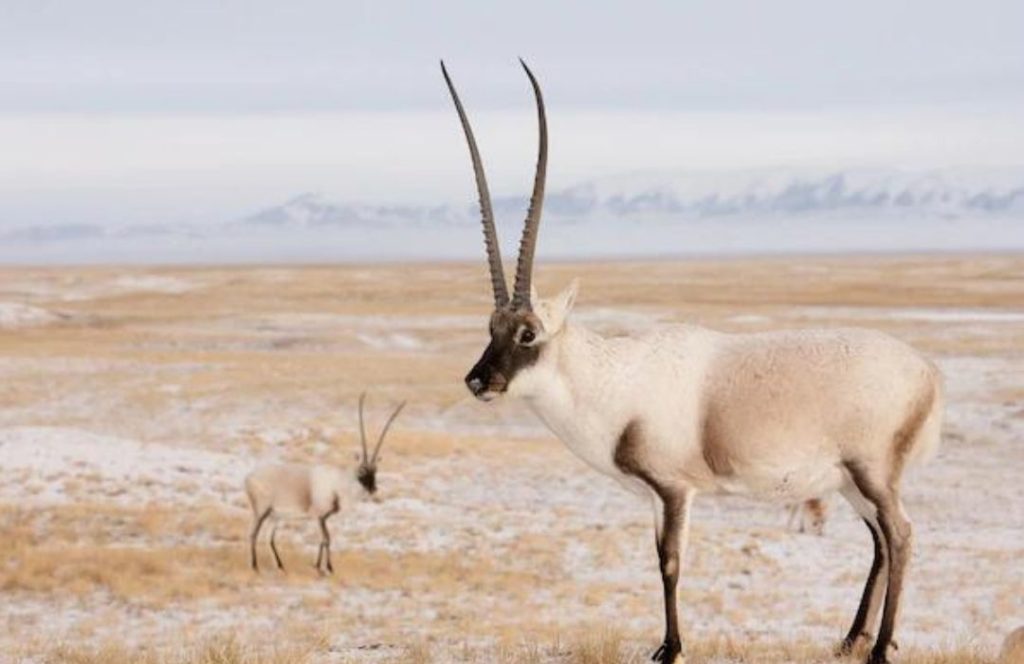
This variety of warm fabrics is rare, sublime, and immensely luxurious. We start our journey with sheer luxury, Shahtoosh - often referred to as the "king of wools" due to its exceptional softness and warmth. Derived from the undercoat of the Tibetan antelope, this fabric is one of the rarest and most luxurious fibers in the world. Its fine fibers create a fabric that is incredibly lightweight and boasts remarkable heat-retaining properties. While its exclusivity has led to concerns about conservation, Shahtoosh remains a testament to the unique blend of luxury and warmth that nature can offer.
Shahtoosh fibre is just 8 microns in thickness which makes it 6 times thinner than human hair. Hence it would be the most sought-after fabric, hadn't it been surrounded by controversy. Shahtoosh comes from the Tibetan Antelope. It is a wild animal and hence herders cannot domesticate it. Hence to acquire Shahtoosh from its body, hunters kill it mercilessly and then sheer its wool off. For this reason, Shahtoosh is banned and is barely available anywhere in the world.
Wool
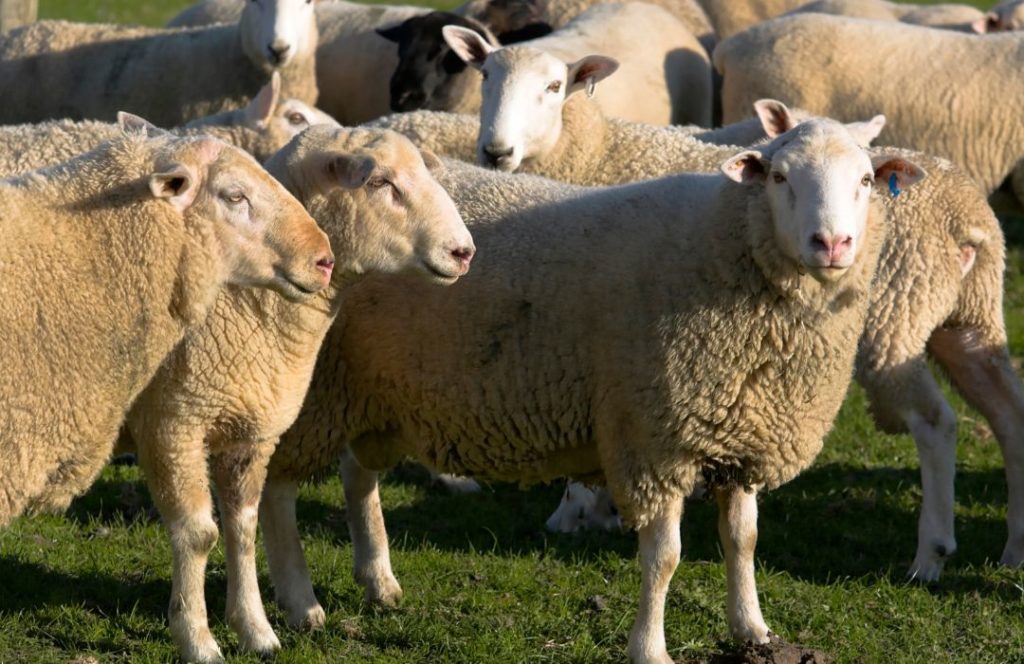
Wool is a timeless classic when it comes to winter fabrics. In the realm of warmth, wool stands as an enduring favorite. Sourced from sheep, this natural fibre is famous for its insulating properties. The crimped structure of wool fibres traps air, forming a barrier that prevents heat loss and keeps the body cozy. The versatility of wool is evident in various types. From fine merino wool that can be comfortably worn next to the skin, to the chunky textures of winter sweaters that provide an extra layer of insulation against the cold, wool is super versatile.
Patrons consider wool as one of the most preferred fabrics when it comes to Winter. The reason is wool is inexpensive when compared to Cashmere, Vicuna, or fur. From merino wool's fine texture to the cozy embrace of chunky knits, wool offers a spectrum of options to cater to different levels of chill. High-quality wool can be really expensive. This owes to the processing of the wool. From shearing, to cleaning and processing the wool, the labour-intensive process might cost the buyers a few more dollars.
Vicuña
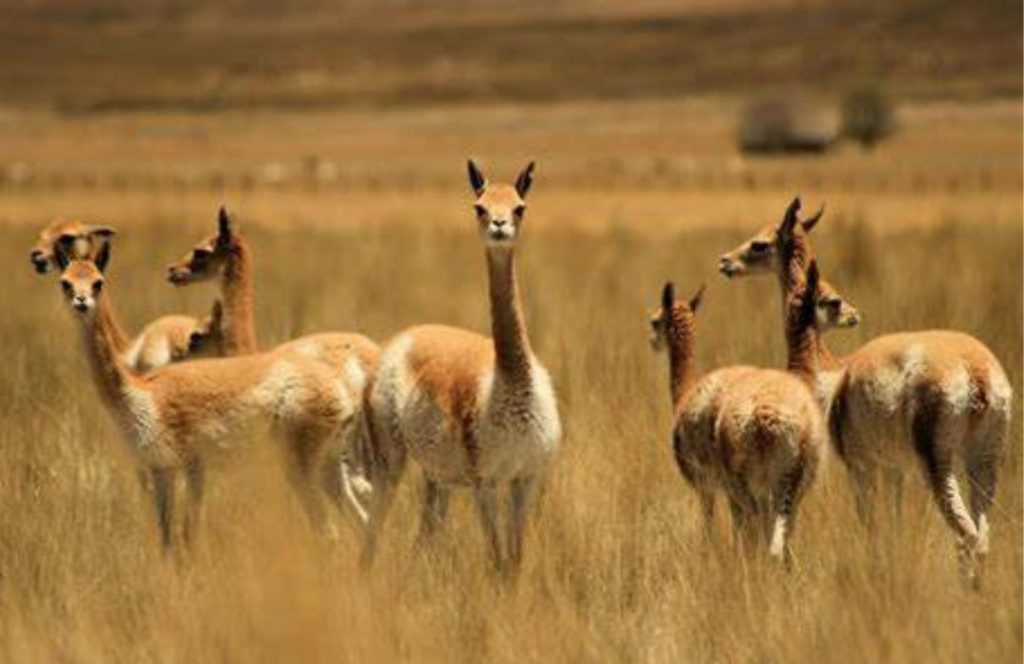
Vicuña, AKA "fibre of the gods," is surely one of the most exquisite and luxurious materials. Sourced from the rare and wild vicuña, a relative of the alpaca, this fabric boasts extraordinary softness and warmth. Vicuña fibres are incredibly fine and lightweight, creating a fabric that feels delicate against the skin while offering exceptional insulation. Due to its rarity and the meticulous process of collection, patrons consider vicuña with exclusivity and opulence. Vicuña textiles are used to create luxurious garments, accessories, and home goods. Those who appreciate the combination of elegance and warmth prefer Vicuna to anything else.
The Animal: Vicuña is a small camelid species native to the high-altitude regions of the Andes Mountains in South America, particularly found in countries like Peru, Bolivia, Chile, and Argentina. Vicuñas are closely related to other camelids like llamas and alpacas. They are famous for their incredibly fine and valuable fibre. It is this fibre that manufacturers use to produce luxurious textiles.
Down
For those seeking the perfect balance between warmth and weight, down is a top contender. Down fabric is a type of textile that producers create from the soft and fluffy under feathers of ducks and geese. These under feathers are located beneath the outer feathers and provide insulation to the birds, helping them stay warm in cold weather. The down clusters are lightweight, three-dimensional structures that trap air, creating pockets of warmth. The fabric is highly regarded for its excellent insulation properties and lightweight feel, making it a popular choice for a wide range of cold-weather clothing and bedding items
Down jackets and coats are popular for their lightweight feel and high heat retention, making them an essential choice for winter adventurers.
Fleece
Fleece is a synthetic fabric. Its exceptional warmth and soft texture are popular all over the world. Made from polyester fibres, it mimics the insulating properties of natural wool by trapping air within its tightly woven or knit structure. This trapped air forms pockets that help retain body heat, making fleece a popular choice for cold-weather clothing such as jackets, sweaters, and blankets. Additionally, fleece is moisture-wicking, quick-drying, and versatile for layering, making it a go-to material for outdoor activities and cozy loungewear alike.
Fur
Stylists and fabric experts recommend fur to those who love a touch of opulence in their outfits. For millennia, fur has been famous for its natural warmth and luxurious aesthetic. It refers to the natural covering of dense, soft hair or pelage that grows on the skin of animals, particularly mammals. Fur serves as insulation, providing warmth and protection for animals in colder environments. It can vary in thickness, texture, and colour depending on the species.
While debates surrounding ethical and environmental concerns persist, it's worth noting that faux fur alternatives offer a cruelty-free option that replicates the cozy appeal of real fur. Whether as a trim on coats or a full-fledged accessory, fur imparts a touch of opulence to winter ensembles.
Cashmere
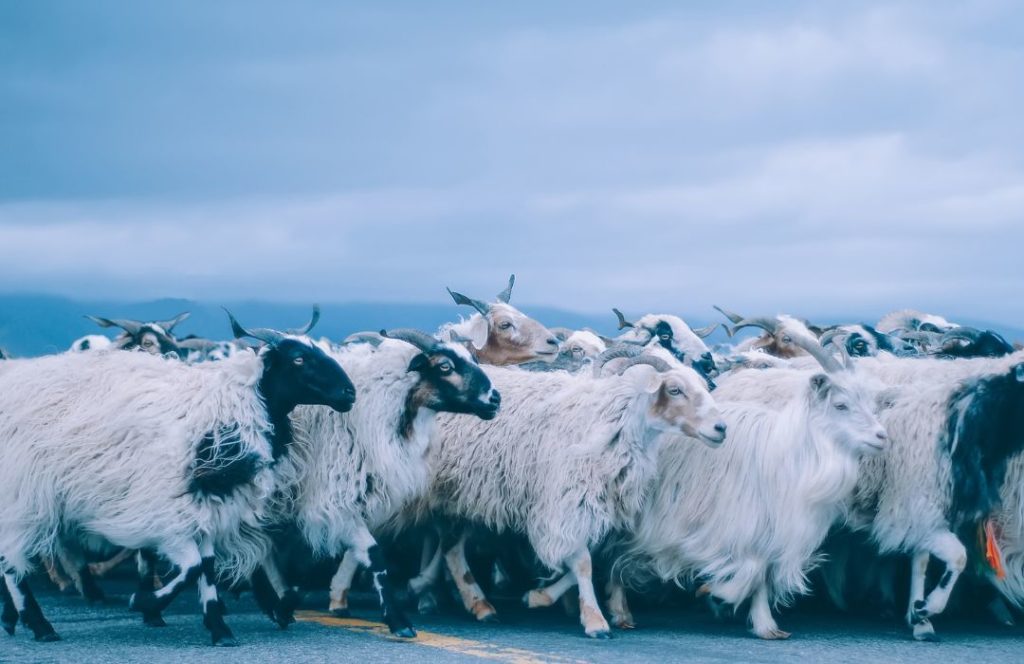
When it comes to luxurious warmth, cashmere stands atop the podium. Derived from the fine undercoat of cashmere goats, this material boasts unrivaled softness and insulating properties. Cashmere fibres are incredibly fine, creating a barrier that traps warmth close to the body. The result is a fabric that not only offers exceptional heat retention but also drapes elegantly, making it a staple in cold-weather wardrobes.
While each of the above has its own merits, Cashmere does stand out in several ways:
Superior Softness
Cashmere is world famous for its exceptional softness, often described as a luxurious and cozy sensation against the skin. This softness arises from the fine fibres that make up cashmere fabric, resulting in a gentle touch that surpasses even the softest wool. Cashmere is so soft that a large-sized shawl measuring 100*200 cm easily passes through a finger ring.
Lightweight Warmth
Cashmere offers remarkable warmth without adding bulk. The fine fibres efficiently trap heat, providing excellent insulation without weighing you down. This lightweight warmth is particularly advantageous for winter clothing, where layering is essential. Hence, users prefer Cashmere to others which are either just bulky layers or lightweight and less warm. The 12-15 micron thickness of a Cashmere fibre allows it to be light. A large 100*200 cm Cashmere shawl weighs around 500 grams only.
Versatility
Cashmere garments as well as wraps are versatile, suitable for both casual and formal occasions. From sweaters and scarves to dresses and accessories, Cashmere can elevate any ensemble with its refined aesthetic and luxurious feel. On top of that, Cashmere wraps are even more versatile when it comes to various occasions. For formal occasions, one can opt for solid or patterned pieces in muted shades. On the contrary, for casual days, one can wear bright and flashy colourful wraps in prints or ombre shades. For more special occasions like weddings, one can wear embroidered, laced, or Swarovski crystal wraps.
Durability
High-quality Cashmere, when cared for properly, can last for years. With proper care, Cashmere garments can maintain their softness, shape, and warmth over time. Users say that a Cashmere wrap, made from 100% pure Cashmere, lasts for more than 20 years. But this happens only when one takes proper care of it.
Timelessness
Cashmere is a classic choice that transcends trends. Its timeless appeal ensures that cashmere pieces remain stylish and relevant across seasons and years. The same Cashmere wrap worn by mothers has been gifted to daughters and those pieces are believed to be as fresh as new.
The embroideries done on Cashmere acquire an heirloom look as they age. As such, embroidered Cashmere wraps look even more beautiful with time.
Breathability
Cashmere is a breathable fabric that allows wearers to wear it in fall, spring, and even cooler summer nights. This is because it doesn't trap the air inside, and hence allows it to pass freely. Hence, wearers do not feel suffocated when wearing a Cashmere wrap. It gives a comfortable and pleasant warmth as it is a natural fibre, which means it comes from animal hair. This often leads to better breathability as natural fibers tend to have inherent moisture-wicking and breathability properties. Additionally, Cashmere has the ability to regulate body temperature effectively.
The Beauty of Cashmere
As long as nature continues to accompany the Changpa tribe of Ladakh, Cashmere scarves will continue to be a message from nature to humankind. The scarves, even after coming from such humble backgrounds, have managed to grab the attention of people all around the world. Everyone since the 18th century has wanted Cashmere scarves to be a part of their regal wardrobes. Producers handcraft Kashmiri distinctive Cashmere scarves from the finest Ladakhi Cashmere. Hence, these contain an element of elegance, besides being of the highest quality, exceptionally warm and timelessly stylish.

Additionally, the distinctive design of Cashmere Scarves demands the creative talent of Artisans. As a result, the valley's artisans are highly skillful craftspeople and are experts in the making of this centuries-old art. The exquisite realm of the Pashmina art form is home to generations of artists. As a result, these fine craftsmen are one of the most respected individuals in the Kashmir Valley.
Kashmiri artisans produce Cashmere fabric in many forms. Some produce large Pashmina shawls or Cashmere scarves and Wraps. Others produce large fabrics for making sarees, or other outfits. Producers use some of the Cashmere fabric for making luxury accessories like ties, pocket squares, caps, mufflers, and more. Hence the fabric, apart from being the warmest material on earth, is super versatile too.
Procurement of the finest Cashmere
Cashmere is procured through a process that involves gentle combing of the fine undercoat of the Changthangi goats, also known as the Ladakhi goats. These goats primarily inhabit the Himalayan regions of India, Nepal, and Pakistan and other regions that fall around the Himalayan range
The process of procuring Cashmere wool involves the following steps:
Selection of the Goats
It is the exotic Changthangi goats of Ladakh that produce the finest Cashmere. Herders choose the Changthangi goats after a careful selection for their fine undercoat. Typically, only the underbelly and neck areas of these goats produce the softest and finest fibres. This fibre is basically a gift from nature to keep the goats warm from the unbearable cold.
On average, a single Pashmina goat produces around 3 to 8 ounces (85 to 225 grams) of wool each year. However, only a small portion of this wool is actually suitable for making high-quality Cashmere products like shawls and scarves. The finest and softest fibres come from the goat's undercoat. Herders carefully comb and collect it during the molting season.
Combing the fibre out
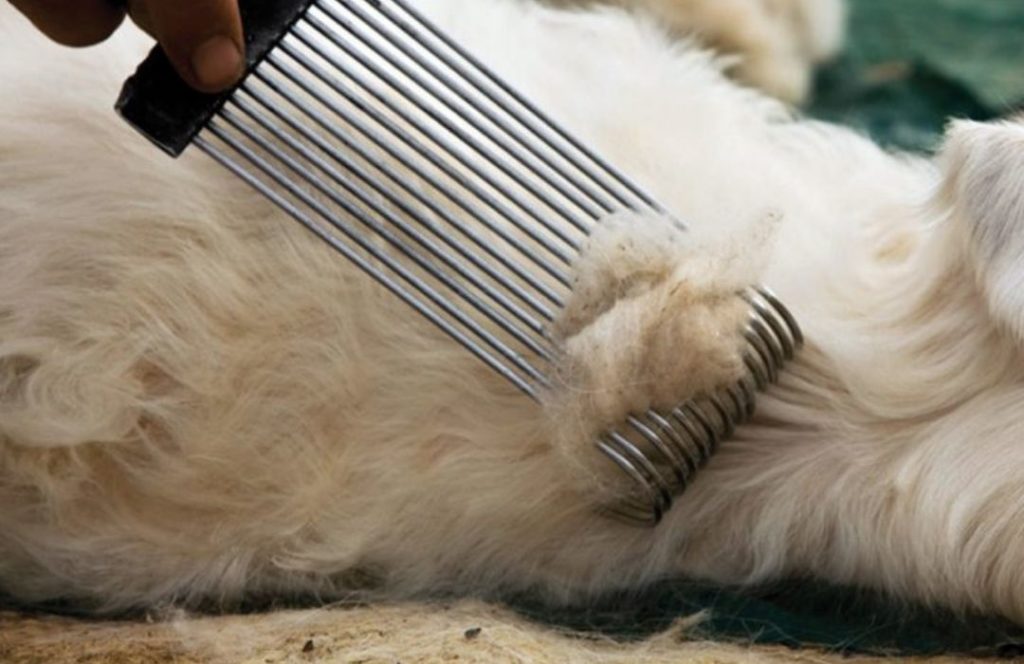
The fibres are obtained through gentle combing. In the process, herders comb the goats using special brushes, and collect the loose undercoat fibres soon after. This method is absolutely humane and does not harm the goats in any way. The goats' well-being is a priority during the process.
Only the most specialized individuals comb the hair off the goat's body for extra precaution. These specialists are people with extensive experience and in this job for decades.
Sorting and Cleaning the raw Cashmere
Workers now sort the collected fibres to separate the finest and longest fibres from the coarser ones. This sorting process helps ensure that only the highest quality fibres are used in the production of the final product. They then clean the fibres to remove any impurities, such as dirt, dust, or vegetable matter.
It is usually the underprivileged women of Kashmir who sort and clean the raw Cashmere wool. They get the wool rid of dirt, dust, vegetable wastes, and other foreign material. Hence raw lumps of wool transform into clean and sorted fibres, ready for the next process.
Hand Spinning raw wool
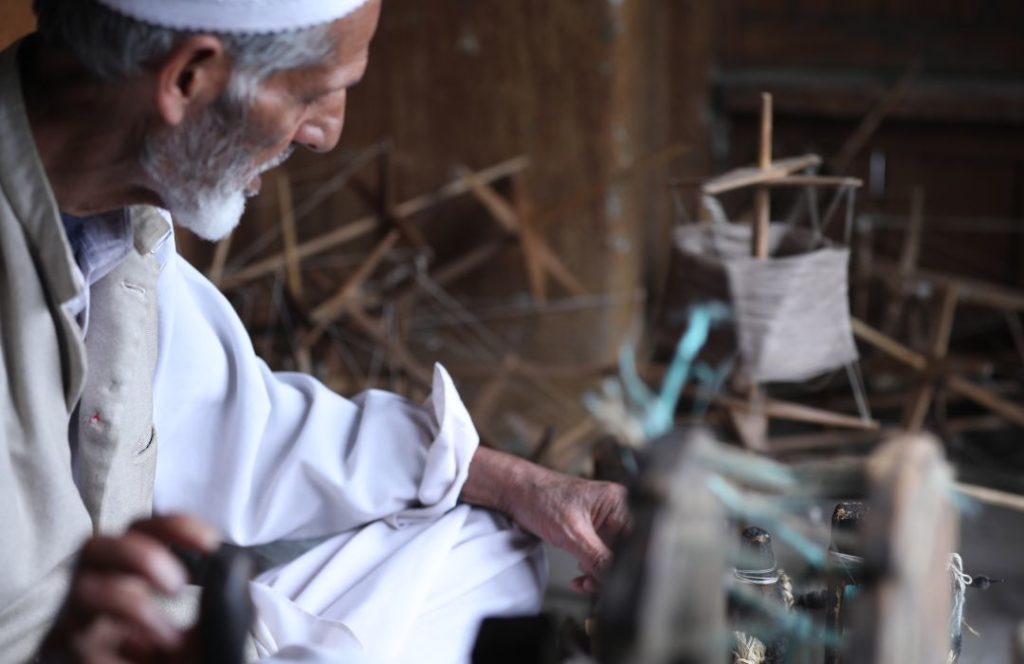
Once workers sorted and cleaned the fibres, they send them to Kashmir for the spinning process to create yarn. Skilled artisans use traditional spinning wheels, locally called Yinder, to carefully spin the fibres into fine, long threads. These artisans are usually women, who have decades of experience in the same. Hand-spinning ensures that the delicate fibres are treated with care and retain their softness and integrity. Lumps of Cashmere wool transform into long threads that have a surprising thickness of 12-15 microns only. Now these super fine fibres go through the hand-weaving process after spinning is complete.
Hand Weaving Cashmere threads
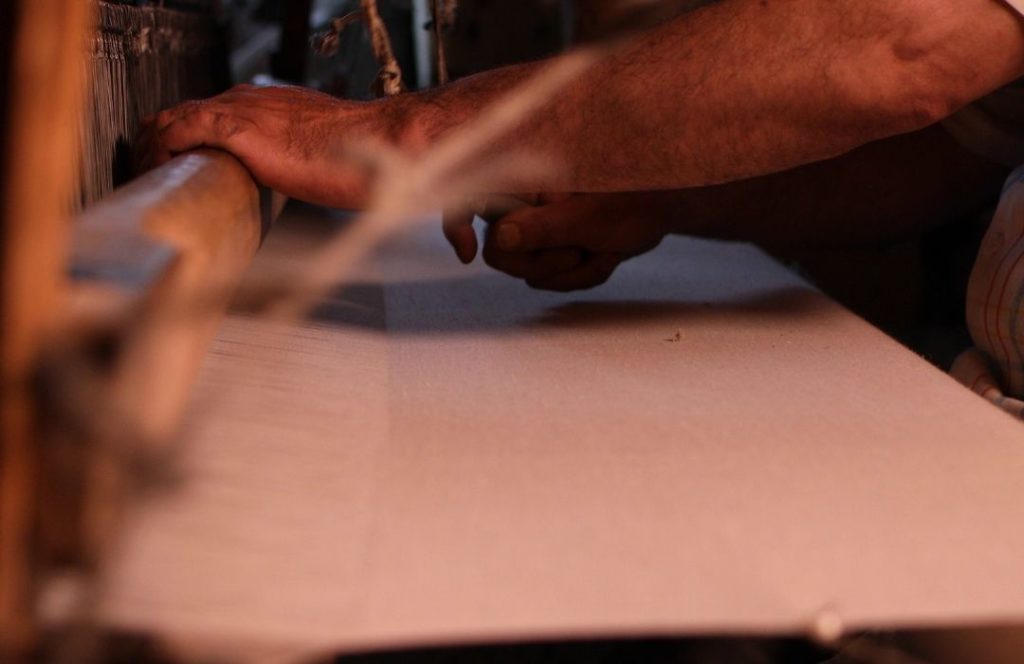
The spun yarn is then woven into the fabric using traditional handlooms. Skilled artisans meticulously weave the yarn into intricate patterns and designs. The process takes about 4 to 5 days. The weaving process requires a lot of expertise and precision to create the delicate and fine fabric that this regal art has always been known for. This process of converting raw Cashmere wool to luxury fabric is called the Art of Pashmina. The end products of processing Cashmere are regal Pashmina shawls, scarves, or Cashmere wraps.
Finishing processes
After the weaving is complete, the fabric undergoes several finishing processes. This includes washing, stretching, and hand-picking foreign threads to enhance the fabric's softness, drape, and quality. Some products may also undergo additional treatments, such as dyeing or hand embroidering, to add more refinement and grace. This is when a Pashmina shawl is complete and ready to wear.
Why is Cashmere Warm?
The special qualities of Cashmere fibres and the manner it is woven are principally responsible for their warmth. For the following reasons, Cashmere is the warmest material on earth.
Fine and Insulating Fibres
The extraordinarily thin and light undercoat fibres of Changthangi goats are used to make Cashmere wraps. These fibres are a lot finer than the wool from normal sheep. When the tiny air pockets are woven together, the microscopic fibres help trap heat and offer insulation. You can stay warm in chilly climates because of the pashmina's ability to retain body heat.
Excellent Heat Retention
Cashmere has exceptional heat retention capabilities. The innate capacity of its gentle fibres is used to trap heat close to the body makes them excellent insulators against the cold. Because it traps heat, Cashmere is a great option for winter clothing because it keeps the body at a comfortable temperature even in chilly weather.
Lightweight and Breathable
Cashmere is airy and lightweight despite being warm. As a result of the fineness and airiness of the fibre, there is less chance of overheating and discomfort. Because of its breathability, one can easily stay warm without feeling suffocated or overburdened with bulky layers.
This is perhaps the number one reason why individuals prefer Cashmere to other fabrics. While other fabrics may cause discomfort if the temperature suddenly rises a bit, Cashmere gives better breathability and comfort.
Moisture-Wicking Properties
Cashmere naturally absorbs and evaporates sweat from the body, making it a moisture-wicking fabric. By minimizing the accumulation of sweat and moisture, which can make you feel cold and clammy in colder weather, this function keeps you dry and comfortable.
Versatile Layering
Because of its lightweight and smooth texture, Cashmere is a great fabric to layer. When you need more warmth, you may quickly drape it over your shoulders, encircle your neck, or wear it as a shawl. Due to its adaptability, you can change the insulation's level according to the weather and your own comfort needs.
It is worth noting that since Cashmere wraps are super fine and lightweight, they can easily be taken off and put in a handbag. This owes to the immense softness of the fabric that makes it fold into a small pouch and get stored easily.
Natural and Sustainable Material
Given that Cashmere is a natural fibre, derived from Changthangi goats, it is a sustainable material to use. Cashmere is a popular choice for cold weather because of its excellent warmth and environmentally friendly manufacturing process. There is no harm done to animals (the Ladakhi goats) during the process of combing their bodies. Apart from this, Cashmere keeps the environment safe from machine pollutants, as the entire process of making Cashmere accessories is manual.
The above factors combine to create a luxuriously warm and cozy fabric that keeps you comfortable during colder seasons, besides styling you like a diva.
Also read: IS CASHMERE BETTER THAN SILK?
Concluding
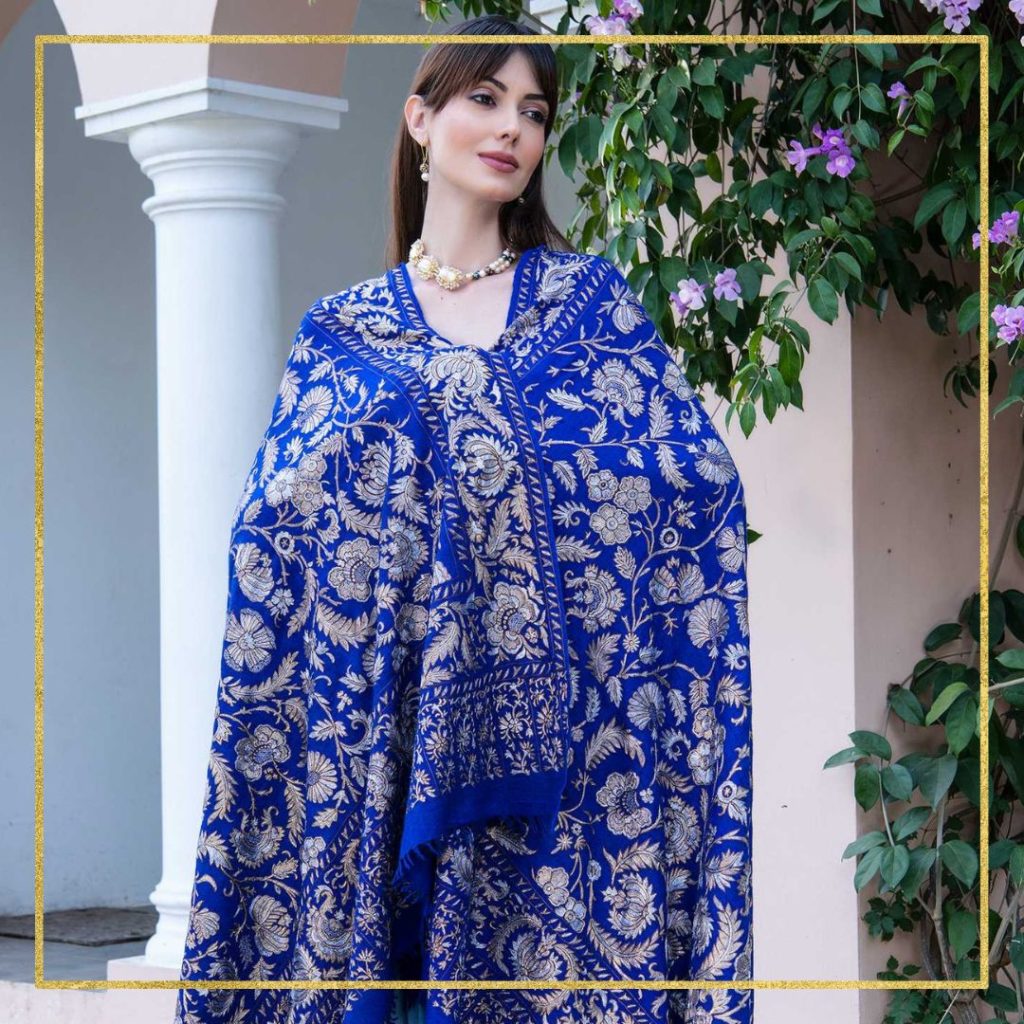
In conclusion, when it comes to the ultimate winter warmth, cashmere undeniably reigns supreme. Its luxurious softness and exceptional insulating properties make it an unparalleled choice for keeping cozy in the coldest of temperatures. The natural fibres of cashmere provide not only exceptional heat retention but also breathability, ensuring comfort without overheating. While other materials offer their own merits, cashmere's unique blend of elegance, comfort, and functionality sets it apart.
Investing in cashmere is not just about acquiring a garment; it's about enveloping yourself in a cocoon of unparalleled warmth, allowing you to embrace the winter chill with grace and style. So, as the snow falls and the mercury drops, let cashmere be your trusted companion, wrapping you in the gentle embrace of winter's warmest delight.
Also read: ARE CASHMERE SCARVES GOOD?